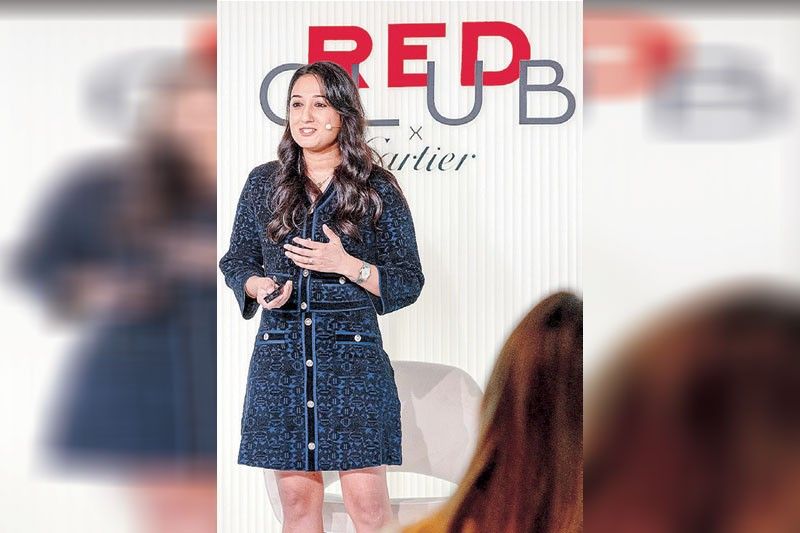My dream is to save lives through early cancer diagnosis

By 2035, one in two people will be diagnosed with cancer.
MANILA, Philippines — This is the story about Joe and the moment that changed my life.
Joe was a 50-year-old-man who was previously fit and well. He was a marathon runner and had two young daughters. He started to feel unwell so he went to see his doctor over the course of six months. Despite lots of investigation and treatment, his doctors failed to find the cause of his symptoms.
In the emergency department, I had the unfortunate task of diagnosing Joe with metastatic pancreatic cancer.
Joe died three weeks later after his diagnosis. While caring for Joe, at no point did he say, “Why was I diagnosed with cancer?” But instead, “Why was my cancer diagnosed so late?”
You see, one in two people by 2035 will be diagnosed with cancer. Currently, half of all patients are diagnosed in the late stage of the disease, and what that means is about 80 percent diagnosed late will die from the cancer.
Yet, if diagnosed early, 80 percent of patients will go on to survive 10 years or more from their cancer. Early cancer diagnosis is more successful than any cancer treatment in history.
Access to an early stage cancer diagnosis is not equal across the globe. Despite Western economies having a higher incidence of cancer, mortality rates are higher in patients with ethnic minority backgrounds and populations in countries where there may not be prevention and screening services.
We need equitable cancer protection as well as early cancer detection.
So I asked myself: what if we could create a future by reimagining that every single patient could survive cancer? This is why I founded C The Signs. Using artificial intelligence, we created a proprietary pattern-pending model, which can analyze data in the electronic medical records and patient reported data to identify patients who are at risk of cancer and help fast track them into diagnostic pathways.
Imagine healthcare professionals having the opportunity to search by any sign, symptom or risk factor for a patient across over 200 different cancer types, to be able to — in under 30 seconds — know if the patient is at risk of cancer, or what type of cancer, and allow them to see a diagnostic specialist as quickly as possible.
So how did I start this journey — from the clinic to the boardroom?
As a female CEO and a person of color, less than two percent of venture capital investment goes to my demographic. Anything we plan starts with a problem that we’re trying to solve, not profits we’re trying to grow. In doing so, there are many challenges.
Role modeling was really critical in trying to find people that look like me in entrepreneurship, which often isn’t the case, especially in the AI industry. We often see people from Silicon Valley as what tech or entrepreneurship looks like. But actually, entrepreneurship can come from anywhere in the world, beyond boundaries and demographics. So resilience was really critical to our journey.
We started in 2017, founding C The Signs. By 2018, we deployed it across the UK’s National Health Service.
I was able to raise $7 million in venture capital funding covering one million patients in the UK. We then were able to publish our research and our findings, critical to demonstrating the validity of our algorithm. And in 2023, being the recipient of the Cartier Young Leader Award was a fantastic opportunity.
By that point, we were covering nine million lives in the UK. Earlier this year, we were helping to accelerate women’s health-related cancers, which have disproportionate poorer outcomes compared to male counterparts. We were getting patients to self-complete assessments and fast-tracking them into diagnostic and therapeutic pathways.
Alongside this, we partnered with the White House Cancer Moonshot team in the United States committed to ending cancer by 2040. We started international expansion, and are soon launching in the US with critical partnerships and great healthcare systems across five million lives.
We completed over 400,000 cancer risk assessments for patients over the course of C The Signs, detected over 30,000 patients with cancer through the use of the technology, over 50 different types of cancers, including rare and harder to diagnose cancers with the ability to rule in or out cancer risk with a 99 percent sensitivity.
We’ve gained much support from the UK’s NHS, as well as the Cartier Young Leader Award. Cartier has invested over $100 million in philanthropic efforts across the world, critical from a thought-leadership perspective, because when you start with social impact, you’re starting with a problem, not with a profit and loss spreadsheet telling you how to grow and scale a business.
Yet social impact offers the biggest rewards to society. In a time of division, fractious relationships, fraying social cohesion and social mobility, the Cartier Young Leader Award really addresses actual entrepreneurship.
So, what’s next for C The Signs?
Our AI system is evolving with exciting data that will help us actually predict who will get cancer when, prior to even developing any symptoms.
It was a moment that changed my life, back in 2017 when I met Joe. Cancer patients tend to stop counting calendar dates; instead, they count moments like weddings, like birthdays, like Christmases — things they’ll miss if they die too soon.
For us at C The Signs, it’s about creating these moments that are sustainable and offer longevity to society.



















